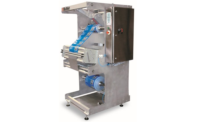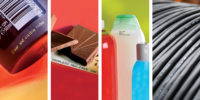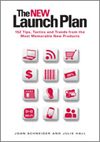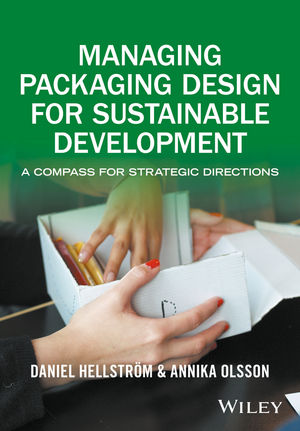According to Micromarket Monitor, the U.S. flexible packaging market is expected to grow to $29.64 billion by 2021 at an estimated CAGR of 4.56 percent. What’s more, new consumer trends, material innovations and printing technologies are further fueling the narrow web marketplace, driving diversification and differentiation.
To help label converters and brand owners explore this profitable packaging arena and build on its growth possibilities, we’ve sought input from Inland Packaging of La Crosse, Wisconsin, a converter that has more than doubled in size in the last eight years thanks to its focus on flexible packaging. With print capabilities that include flexo, offset, gravure and digital, Inland’s drive for continuous improvement and growth have put it on the flexible packaging fast track.
Why Flexible Packaging? And Why Now?
The question isn’t whether to get into flexible packaging, the question is when. We would argue the time is now. Market research firm LPC estimates that only 12-15 percent of traditional U.S. label printing companies with annual sales of $2 million or higher are producing flexible packaging. That means there is a lot of opportunity for small and mid-size label companies to use narrow web as a competitive differentiator.
The story is quite different for brand owners. According to the “Transition Advantages Study” commissioned by the Flexible Packaging Association, 83 percent of brand owners are already using flexible packaging. Fifty-eight percent of those using flexible said they intend to use a higher mix of it in the next five years. Why such a positive response to flexible packaging? The answer: performance. According to the survey, a significant number of brand owners who increased their use of flexible packaging were able to:
- Lower production costs,
- Improve supply chain efficiencies and
- Increase competitive positioning due to consumer appeal.
Clearly for brand owners, flexible packaging is a plus, which is why Inland Packaging has seen such strong growth in that area.
“The brand owners we work with are big on flexible packaging,” says Scott May, Inland’s senior vice president of sales and marketing. “They appreciate the speed to market it delivers, the opportunity to customize packaging, the flexibility to make changes to artwork and the ability to better handle high SKU/low production volumes. Brands also turn to flexible packaging for the varied levels of performance enhancements available, including oxygen and light barrier properties.”
Whether you’re a small converter or a big brand owner, the versatility of narrow web printing offers growing opportunities. The tips below may show you how flexible packaging specifically can be not just a key USP for your business, but a bigger part of your bottom line.
No. 1: Give Consumers What They Want
Flexible packaging fits consumers’ on-the-go lifestyles. Increasingly, consumer demand for speed, convenience, ease of use and portability is combining with innovative packaging concepts like single-use portions, trial sizes and calorie control to drive a proliferation of SKUs best handled with flexible packaging. Brand owners also appreciate flexible packaging, particularly trial sizes that get consumers to try and buy. Another growing consumer demand spurring flexible packaging growth is transparency. Consumers like to see what they’re buying, particularly with food packaging. This has, and will continue to drive, the development of transparent materials suitable for flexible packaging.
No. 2: Go For High Quality and Build Brand Impact
The proliferation of packaging types brought about by consumer lifestyle trends is driving down average job sizes and run sizes in the flexible packaging space. For some, that means taking flexible packaging to digital, particularly for personalization and variable data. However, the majority of flexible packaging in the U.S. is printed flexo according to May. He states the print quality of flexo and HD flexo now rivals that of gravure and other wide web print formats.
The high print quality is just one thing causing brand owners to choose flexible packaging. Another is the impact flexible packaging can create for the brand, enhancing brand image and differentiating the product on the shelf. For example, newly enhanced film-faced pouching products lend themselves to high-end graphics that maximize shelf appeal. Plus, upscale stick packs allow for brand expansion into single use and bundle packaging, as well as short-runs, regional products and versioning, all of which encourage sampling, build brand awareness and add the kind of visual impact that gets noticed and purchased by consumers.
No. 3: Think Operational Value
According to May, narrow web converting adds to a company’s bottom line.
“Narrow web production is a more cost-effective approach to frequent graphic changes, the lower inventory targets of JIT delivery and proliferation of SKUs,” he says. “Additionally, it offers a lower cost of startup/make ready.”
No. 4: Explore New Materials
May notes that today’s narrow web presses can efficiently and effectively handle very low gauge, unsupported films – sometimes even better than wide web formats. Unsurprisingly, flexible packaging has seen recent growth in personal care products and non-food retail due in large part to material innovations developed specifically for narrow web applications.
For example, Avery Dennison’s new ChemControl Flexpak Portfolio makes it easy for converters to target growing hard-to-hold opportunities found in industrial applications. Designed for ease of process and lower total applied cost, ChemControl offers Barex equivalent solutions with high barrier and chemical resistance for aggressive contents, everything from essential oil towelettes to fuel stabilizers.
Similarly, its expanded Stickpak Portfolio offers higher barrier capabilities for better product protection from moisture and oxygen in single-serve packaging. The notched and easy-open versions add versatility and convenience, making packaging easier to grasp, open, squeeze and dispense.
No. 5: Go Flexible to Help Meet Sustainability Targets
Increasingly, the goal with sustainability is to make materials thinner while still retaining the integrity of the packaging. In this area, flexible packaging rules. It uses fewer resources and can package the most product in the least amount of packaging possible, positively impacting the energy use, GHG emissions, storage, transportation and waste going to landfill. Plus it’s lighter and packs more compactly than rigid packaging.
Avery Dennison






